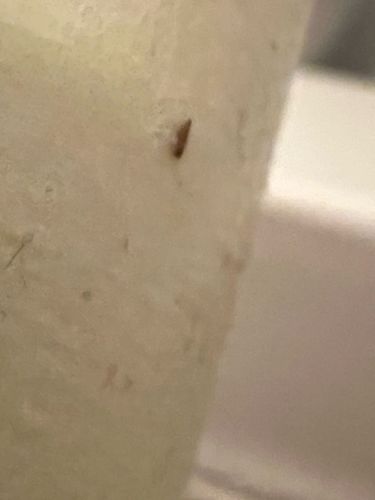Booklouse (or Psocid)
Scientific Name: Likely from the order Psocoptera, possibly genus Liposcelis (due to common indoor occurrence and wingless appearance)
Order & Family: Psocoptera, various families (e.g., Liposcelididae, Psocidae)
Size: Typically 1-2 mm in length, very small and often overlooked.

Natural Habitat
Damp, warm, and dark environments; commonly found in old books, wallpaper, stored food products, under carpets, around window sills, and in areas of high humidity. Often associated with mold and fungi.
Diet & Feeding
Feeds primarily on microscopic molds, fungi, starches, glues in book bindings, wallpaper paste, cereal products, and other organic detritus. They do not bite humans or pets.
Behavior Patterns
Generally nocturnal and reclusive, avoiding light. They are fast-moving given their size, often scurrying away when disturbed. Reproduce rapidly in favorable conditions (high humidity). Many species are parthenogenetic, meaning females can reproduce without males.
Risks & Benefits
Potential risks include general nuisance, minor damage to books, paper products, and stored foods due to feeding on mold or the items themselves. They are not known to transmit diseases or cause direct harm to humans or animals. Their presence often indicates high humidity or mold issues in a building, which can be a risk for human health. They offer no significant benefits to humans but are part of the decomposer community in natural environments.
Identified on: 10/12/2025